 |
 |
 |
| |
TLR7 Agonist GS-986 Markedly Activates T & B Cells From ART-suppressed Donors
|
| |
| |
Reported by Jules Levin
CROI 2017 Feb 14-16 Seattle, WA
Joshua Cyktor1, Anthony Cillo1, John Bui1, Joseph Hesselgesser2, Tomas Cihlar2, Jeffrey Murry2, John Mellors1
1 University of Pittsburgh, Pittsburgh, PA, USA; 2 Gilead Sciences, Foster City, CA, USA
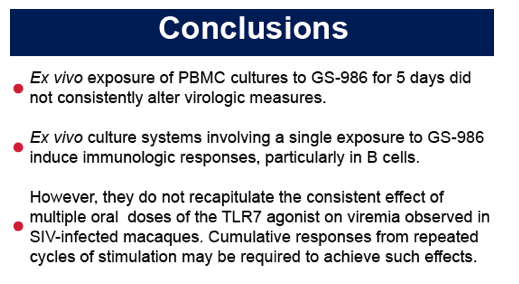
Abstract Body:
TLR7 is expressed within plasmacytoid dendritic cells and B cells, and senses viral RNA to link innate and adaptive immune responses. The TLR7 agonist GS-986 (a close analog of GS-9620) induces SIV viral blips after 3-4 biweekly doses in a macaque model of ART suppression by undefined mechanisms. We investigated the immunologic and virologic effects of GS-986 ex vivo using cells from HIV-infected donors on long-term ART.
PBMC and CD8[sup]+[/sup] T- or B cell-depleted PBMC were isolated from fresh blood or leukopaks and cultured for 5 days with or without 100nM GS-968. HIV-1 DNA, unspliced RNA (CA-DNA and CA-RNA), and virion release were measured by qPCR. Immune cell phenotype, cytokine production, proliferation, and antibody levels were evaluated by flow cytometry, Luminex, CFSE, and ELISA assays, respectively. After 5 days of culture, resting and total CD4[sup]+[/sup] T cells were isolated and assayed for the number of cells releasing virions following maximal stimulation with PMA/ionomycin (iono).
PBMC were obtained from 9 donors (5 blood; 4 leukopak) on suppressive ART (median duration: 7 years). Exposure to 100nM GS-986 for 5 days did not consistently alter CA-DNA or CA-RNA per 106 CD4+ cells, virion release, or the number of cells releasing virions after subsequent PMA/iono stimulation. CD8- or B cell-depletion did not affect virologic responses. By contrast, GS-986 was immunologically active in all donors, doubling the proportion of CD4/CD8 double-positive T cells and having the greatest effects on CD25, CD69 and HLA-DR in this population (mean absolute increases of 11.4%, 11.9%, 18.4%, respectively). 11% of naïve B cells became activated and recall of memory plasma B cells was induced to 29%, with large increases in secreted IgM (mean 60-fold) and IgG (mean 34-fold increase), and induction of 6 rounds of proliferation by CFSE. GS-986 induced multiple cytokines, most notably IL-1β, IL-6 and IL-10 with mean increases of 6.4-, 250- and 8.2-fold, respectively.
Exposure of PBMC to GS-986 for 5 days markedly activated T cells and B cells, but did not consistently alter virologic measures. Ex vivo culture systems involving a single exposure to GS-986 induce profound immunologic responses but do not recapitulate the consistent and large effect of TLR7 agonism on viremia observed in macaques after multiple oral doses. Cumulative responses from repeated cycles of stimulation may be required to achieve such effects.

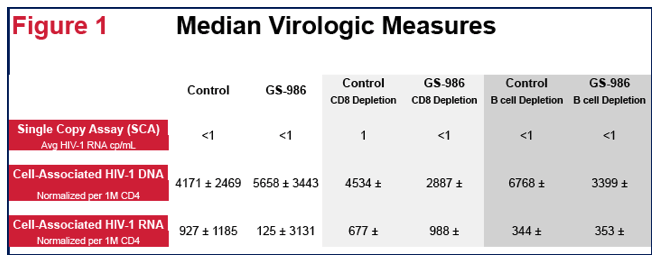
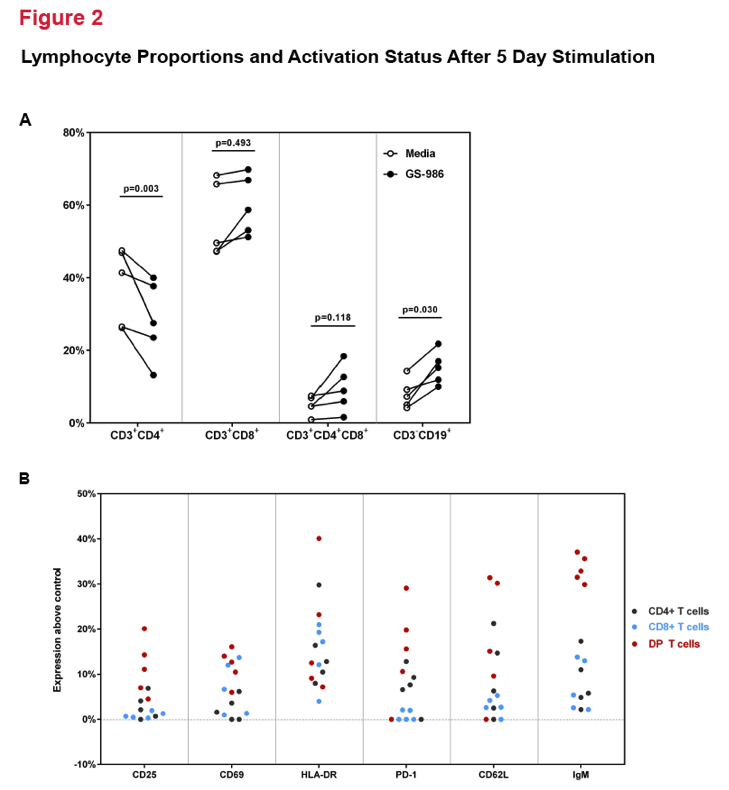
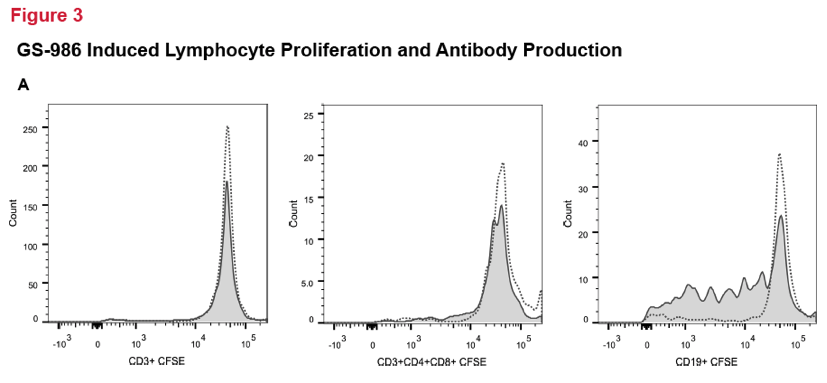
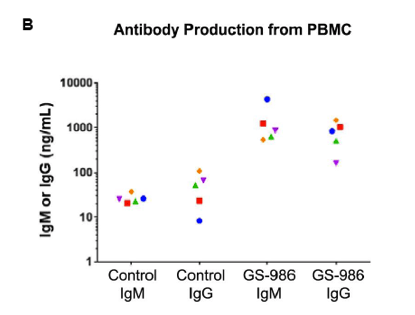
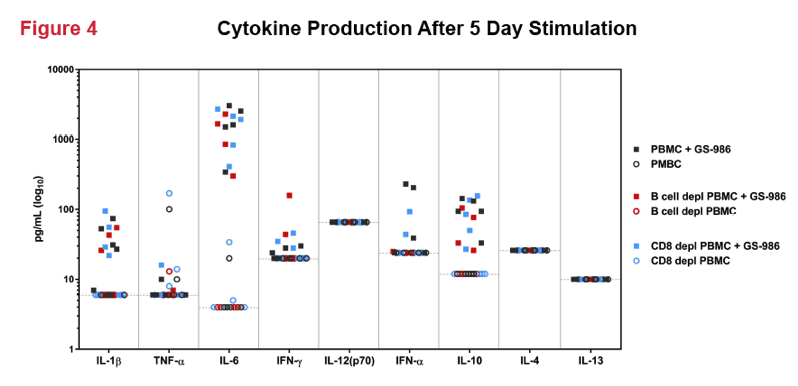
|
| |
|
 |
 |
|
|